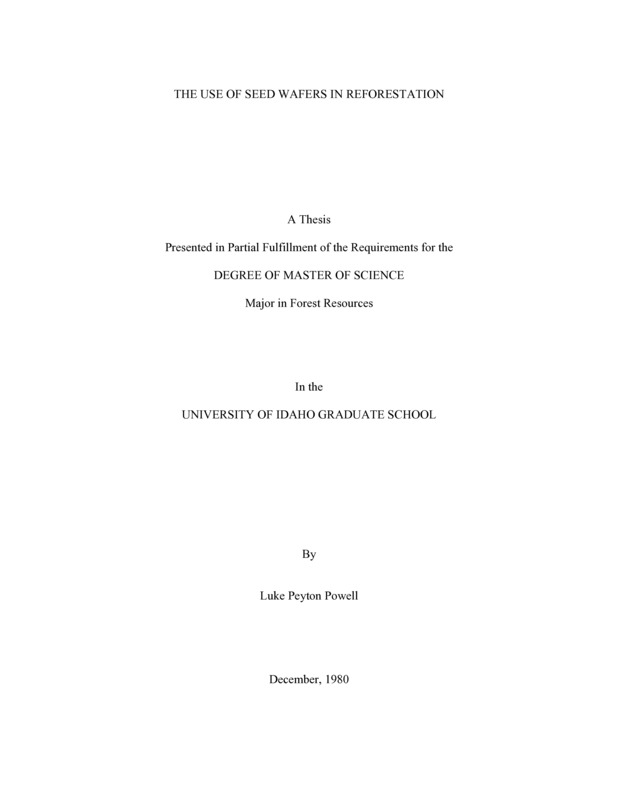PDF PREVIEW
The Use of Seed Wafers in Reforestation Item Info
- Title:
- The Use of Seed Wafers in Reforestation
- Creator:
- Powell, Luke Peyton
- Date Created:
- 1980-12
- Description:
- There are currently over 281,000 hectares of forest land in the Inland Northwest in need of reforestation. As planting costs average $247.00 per hectare, an efficient and economical means of establishing regeneration has been sought. Seed wafers may offer an alternative in reforestation by providing the seed with a compact microenvironment favorable for germination. A seed wafer is composed of a seed embedded in a tablet of a fine grade of vermiculite and activated carbon bound by methylcellulose. Germination values of the four best wafer treatments of ponderosa pine were not significantly different from the germination value of the untreated control seeds. Untreated Douglas-fir seed germinated faster and more completely than controls. Field plantings of seed wafers and controls failed largely due to an atypically dry spring and summer. Greenhouse studies revealed that the water-holding capacity of vermiculite facilitated the imbibitions of water. It does not seem likely that the wafer material surrounding the seed inhibits the exchange of gases prior to germination. The methylcellulose-bound wafers break apart readily in water and provide a porous medium surrounding the seed
- Document Type:
- Thesis
- Library Call Number:
- SD409.P6
- Subjects:
- seed wafers regeneration Flat Creek silviculture
- UIEF Unit:
- Flat Creek
- Section:
- S5
- Township:
- T40N
- Range:
- R3W
- Location:
- UIEF; Flat Creek
- Latitude:
- 46.839291
- Longitude:
- -116.739612
- Department:
- Department of Forest Resources
- Type:
- Text
- Format:
- application/pdf
Source
- Preferred Citation:
- "The Use of Seed Wafers in Reforestation", UIEF Research Exchange, University of Idaho Library Digital Collections, https://www.lib.uidaho.edu/digital/uief/items/uief_0061.html
Rights
- Rights:
- In copyright, educational use permitted.
- Standardized Rights:
- http://rightsstatements.org/vocab/InC-EDU/1.0/

